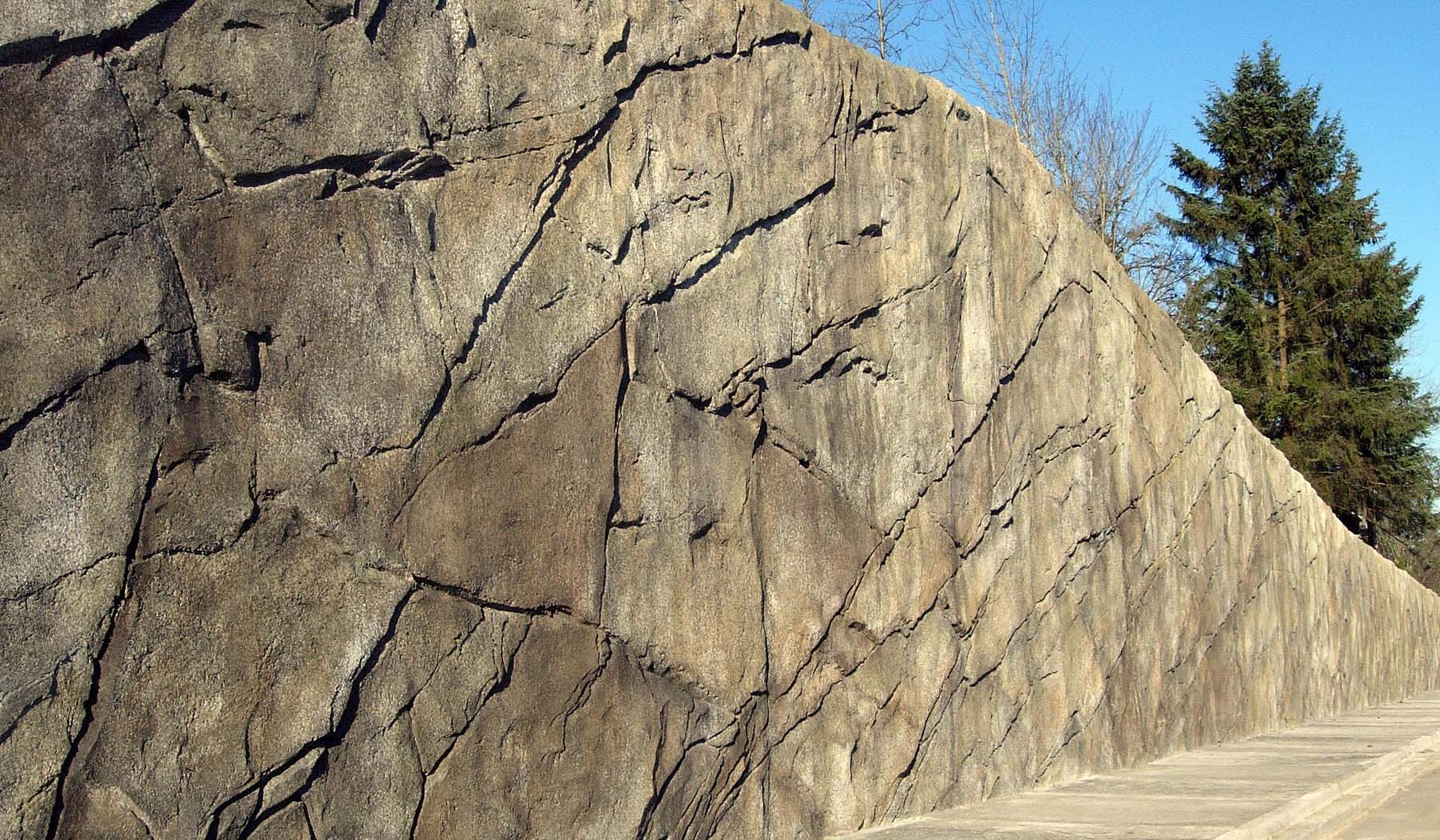Shotcrete, concrete applied pneumatically at high velocity, has become attractive because of its potential for saving cost and construction time when used to replace cast-in-place (CIP) concrete for retaining walls and slope stabilization. However, it also has potential drawbacks that raise concerns about its durability. This project was a first-phase effort in determining the best practices for using shotcrete for wall fascia built with soil nails and soldier piles. With the increasing desire of highway agencies to use shotcrete to save time and money, such information will be helpful to them in achieving the best structural quality and durability.
The researchers used two types of mixtures—a desirable shotcrete mixture and a CIP concrete mixture—to compare shrinkage cracking and durability, the two most critical performance issues associated with shotcrete. They studied the concretes’ material properties in both their fresh and hardened states and looked at early age shrinkage and restrained shrinkage performance, as well as long-term freeze-thaw resistance through dynamic modulus of elasticity and fracture energy testing.
The researchers found that AASHTO’s T334 restrained ring test procedures were capable of evaluating the early-age shrinkage cracking tendencies of shotcrete. The fracture energy test was found to be more sensitive than the dynamic modulus of elasticity test in screening for material deterioration and aging effects under freeze-thaw cyclic conditioning.
Laboratory testing showed that prolonged watering curing methods were beneficial in mitigating shrinkage cracking. Curing compound was also found to be potentially beneficial for mitigating shrinkage cracking, but more field research is needed. The shotcrete studied in Phase I exhibited better early age shrinkage resistance and long-term freeze-thaw resistance than the CIP concrete that was evaluated.
This was a preliminary study, and more information is still needed. The researchers recommended that further investigation include testing more mix designs; testing the mechanical properties and durability of the shotcrete before it is “shot” and after it is shot; further evaluating air-void characteristics; evaluating the effectiveness of additional strategies—such as shrinkage reducing admixtures, accelerators, expansive cementitious materials, silica fume, and steel fiber—in mitigating early age shrinkage; determining other methods for screening damage to pore structures and revealing failure due to freeze-thaw action; investigating the effects of salty deicers and the corrosion of reinforced bars; investigating debonding at the interface between the shotcrete and substrates; and developing accurate methods based on damage mechanics and statistical tools for predicting the service life of shotcrete.
Authors:
Pizhong Qiao
Zhidong Zhou
WSU Department of Civil and Environmental Engineering
Sponsor: WSDOT
WSDOT Technical Monitors:
Mark Gaines
Marco Foster
Brian Aldrich
WSDOT Project Manager: Lu Saechao

